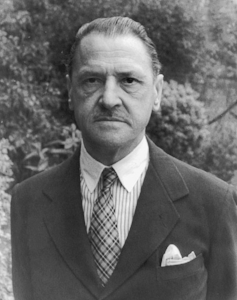In this month’s video we have a look at the Americano cocktail:
The word Americano in reference to the cocktail first appears in print in the 1928 book Ashenden: Or the British Agent written by Somerset Maugham: “He sat in the cool and drank an americano.” Cocktails often have a connection with secret agents (think James Bond’s vodka martini, shaken not stirred), and this novel fits into that mould. It’s the story of the adventures of a playwright-turned-spy named Ashenden set during WWI. Apparently it’s based on Maugham’s own experiences as a member of British Intelligence during the war, just as Ian Fleming drew on his WWII experiences for James Bond. Speaking of James Bond, the very first drink he orders in the very first James Bond novel, Casino Royal, is the Americano, so it certainly has its spy pedigree. In other Bond stories we find the famous super spy drinking a Negroni, so 007’s drink tastes certainly extended beyond his now-trademark martinis.
Although the caffè americano is supposedly connected with WWII, it doesn’t find its way into print in English until a 1964 issue of the Sunday Gleaner of Kingston, Jamaica: “Cafe Americano or cafe Latino? The first is what it says. Mild American-style coffee.” The Oxford English Dictionary reports the phrase café americano being used in Central American Spanish at least as early as 1955. As for the Negroni, as I mentioned in the video, it was first used in print quoting Orson Welles: “Orson Welles, working in ‘Cagliostro’ in Rome, writes that he's discovered a new drink there—Negronis. It's made of gin, Italian vermouth and Campari bitters. ‘The bitters are excellent for your liver, the gin is bad for you. They balance each other.’” Shortly thereafter, Ernest Hemingway used the word Negroni to refer to something that sounds an awful lot like an Americano instead: “They were drinking negronis, a combination of two sweet vermouths and seltzer water” (Across the river and into the trees, 1950). By the way, there’s a Negroni week to celebrate the cocktail and it’s history. This year (2017) it falls on the 5th to the 11th of June, so mark you calendars and raise a glass to Count Negroni, whoever he is. Here’s a picture of bartenders dressed as “Count Negroni” mixing a giant cocktail.
As for the invention of vermouth, the other main ingredient in the Americano, fortified wines containing wormwood seem to go back thousands of years, but the best claim for the invention of the modern vermouth as we know it goes to Antonio Benedetto Carpano, who introduced the drink in 1786 as a sweet liqueur more suitable for ladies. The Carpano distillery also invented Punt e Mes, used in the original Americano.
Vermouth and Campari are both classified as types of amaro, “bitter” in Italian. That word amaro comes from Latin amarus, which may come from the Proto-Indo-European (PIE) root *om- meaning “raw, sharp-tasting”. The word amaro has as cognates two other liqueurs, amaretto and maraschino.
The etymology for America given in the video is by far the most widely accepted one, but there is an alternate suggestion that the Americas were not named in honour of Amerigo Vespucci, but after a man named Richard Amerike. According to this claim, Richard Amerike, an Anglo-Welsh merchant, royal customs officer, and sheriff of Bristol, was a backer of John Cabot’s expedition to the “new world”, which was subsequently named after him in gratitude for this sponsorship. The problem is there isn’t really any evidence for any of this, and so few have taken up the theory. By the way, his last name Amerike is an anglicised spelling of the Welsh ap Meurig meaning “son of Meurig”, which is the Welsh form of the name Maurice, which comes from the Latin name Maurus. This in turn may be related to Greek mauros “dark” and/or to Moor, in other words inhabitant of Mauritania. But lest we lose our connection to the PIE *reg- root, Amerike’s first name, Richard, is made up of the elements ric “ruler” and harthu “hard”, so literally “hard or powerful ruler”.
And speaking of that root, and the Taler or Joachimsthaler coin, the other countries that picked up the coin also added that ric element to the name, not only the Holy Roman Reichsthaler, but also the Dutch rijksdaalder, the Danish rigsdaler, and the Swedish riksdaler. All of these names mean essentially “national dollar”. As for the American dollar, it’s colloquially known as the buck which is an abbreviation of buckskin, a common unit of exchange between Native Americans and Europeans in the early frontier days of North America.







